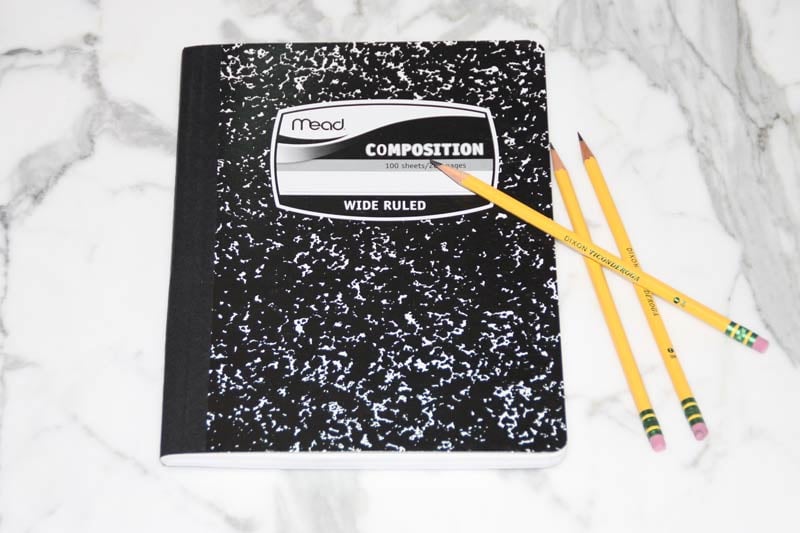 Among the genres of writing projects that students experience in upper elementary, middle and high school, the five-paragraph essay is one of the most popular. Well, it’s popular with teachers. With students, just saying the phrase “five-paragraph essay” can evoke audible groans. For those writers, it calls to mind themes of dullness and standardization, a static formula. Yet the form is a valid one for a number of reasons, and in the right conditions, it can encourage creative thinking instead of stifling it. In fact, among the benefits of the five-paragraph essay are valuable opportunities for writers in terms of cognition, rhetoric, and culture.
Among the genres of writing projects that students experience in upper elementary, middle and high school, the five-paragraph essay is one of the most popular. Well, it’s popular with teachers. With students, just saying the phrase “five-paragraph essay” can evoke audible groans. For those writers, it calls to mind themes of dullness and standardization, a static formula. Yet the form is a valid one for a number of reasons, and in the right conditions, it can encourage creative thinking instead of stifling it. In fact, among the benefits of the five-paragraph essay are valuable opportunities for writers in terms of cognition, rhetoric, and culture.
There’s a reason that Bloom’s Taxonomy, a hierarchy of thinking processes, lists “creation” as its most complex category: whether a student is investigating a hypothesis, building a contraption, or writing an essay, creating something new is a difficult task. A major component of this difficulty is what educators and psychologists call cognitive load, the amount of working memory resources a task demands of the person performing it. In her widely cited article “A Capacity Theory of Writing: Working Memory in Composition,” the educational scholar Deborah McCutchen illustrates the cognitive load of writing: “to compose a text, skilled writers coordinate within working memory planning goals (e.g., plans for content, audience, overall tone, etc.) and product goals (e.g. requirements of grammaticality, plan fulfillment, etc.) while language generation processes retrieve words to express content and organize those words into appropriate text (see Flower and Hayes, 1980, 1981, 1984 McCutchen, 1994).” Understandably, it can be difficult for a writer to attend to all of these processes at once, and if the cognitive load is too high, the writer might not be able to complete the task. One way to lighten this load is to focus on different aspects of the writing process and product at different times; educators have adopted this principle in frameworks like the 6+1 Writing Traits or Judith Hochman’s Teaching Basic Writing Skills. Because it offers a consistent structure, one of the major benefits of the five-paragraph essay is that once a writer is familiar with it, using that framework for planning frees more of their cognitive load. With their basic organizational scheme already chosen, the writer can attend more fully to other aspects of their work, such as ideas, voice, word choice, sentence fluency, conventions, and presentation.
In thinking of the rhetorical power of the five-paragraph essay form, rather than the total number of paragraphs, we should consider a different number, a bit of a magical number: three. In his book Writing Tools: 55 Essential Strategies for Every Writer, Roy Peter Clark discusses the hidden power of numbers in language. Citing examples such as “Moe, Larry, and Curly. Tinkers to Evers to Chance. A priest, a minister, and a rabbi. Executive, legislative, judicial,” he notes that “In our language and culture, three provides a sense of the whole.” There’s just something about a set of three things that resounds with people. In allowing the writer to use three body paragraphs to set forth three main points, the five-paragraph essay invites the writer to tap into this power. It is worth noting that three is not the only powerful number. For instance, before they learn the five-paragraph essay form, many students learn the four-paragraph essay, which reemerges occasionally in high school. This form allows students to graduate from three-paragraph essays, whose single body paragraph generally explores one major point, to use two body paragraphs to explore a duality within their topic.
The cultural argument for the five-paragraph essay may, at first, seem self-serving: It is useful because it is widely used. But just as it serves a purpose for writers, it serves a purpose for readers. Faced with this familiar form, readers know to look for a guiding claim or thesis statement at the end of the first paragraph. Anticipating how the structure works makes it easier for the reader to comprehend the piece. This is not to say that all five-paragraph essays work the exact same way. As we noted above, the advantage of a familiar structure is to let students concentrate on other aspects of writing, so as students progress, their ideas should grow more sophisticated even within this same form. Their order of body paragraphs should have a perceptible logic, their analyses should be complex, and rather than serving as a simple summary, their conclusion could emphasize the significance of their argument. Even after writers move on to longer and more complex forms, they may still find occasion to access the benefits of the five-paragraph essay. Two of the highest-stakes pieces in high school, the ACT or SAT essay and the main Common Application statement, lend themselves well to the form. In both the ACT and SAT, testers must compose a complete essay in less than an hour. If they enter the test already tentatively knowing what their structure will be, they will save valuable minutes of writing time. The urgency of time is also a factor for the essays’ audiences. Both the test essays and the Common Application essay are read by people who are consuming a high volume of pieces and consuming them quickly — in the case of the application essay, in just a few minutes. It is to the writer’s advantage to make the reader’s job easier by giving them a vivid, specific essay in a structure that is easy to follow.
The students who rail against five-paragraph essays might be surprised to hear that the form is controversial in academia as well; in fact, a new book by the college instructor John Warner, titled Why They Can’t Write, is subtitled Killing the Five-Paragraph Essay and Other Necessities. While we don’t want to kill the five-paragraph essay, we agree that the form has at least one downside: the potential for overuse. If every piece a student composes is a five-paragraph essay, that’s a problem. No single structure, essay or otherwise, should encompass all of a student writer’s experiences in a school year, or even in a single class. Writers of all ages need opportunities to wrestle with form. We don’t want writers to believe, as even some first-year college students do, that big ideas always come in threes, or that one paragraph is always sufficient for sharing their thoughts on one of those ideas. Notably, hardly any pieces of “real world” writing, including published essays, take the form of a five-paragraph essay. That’s another downside: ultimately, the structure is too simple for public discourse. Even as we help students understand and access the benefits of the five-paragraph essay, we must emphasize that the form acts like a set of writerly training wheels. Eventually, with instructors’ guidance, students need to shift from letting form determine their ideas to letting their ideas determine form. At that point, the training wheels should fall away, and writers will zoom forward, perhaps a little wobbly at times, but entirely under their own power.
By Elizabeth Walters, Private Tutor and Writing Coach

